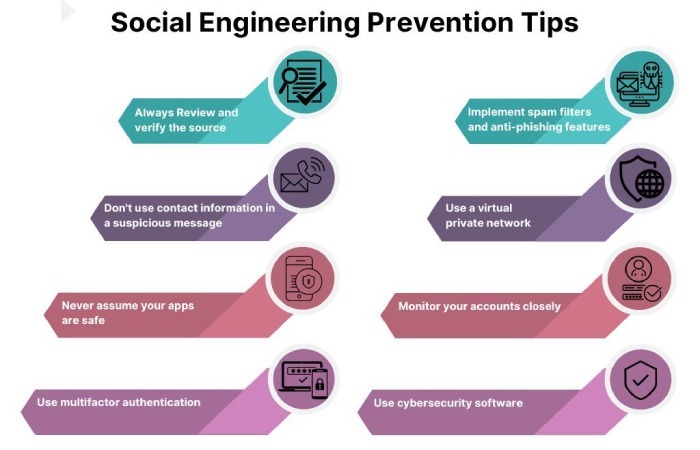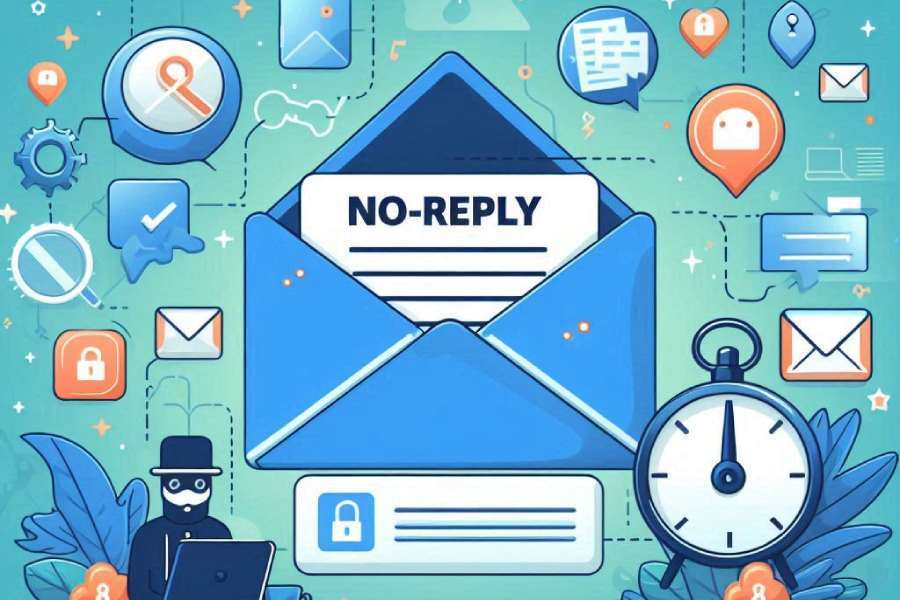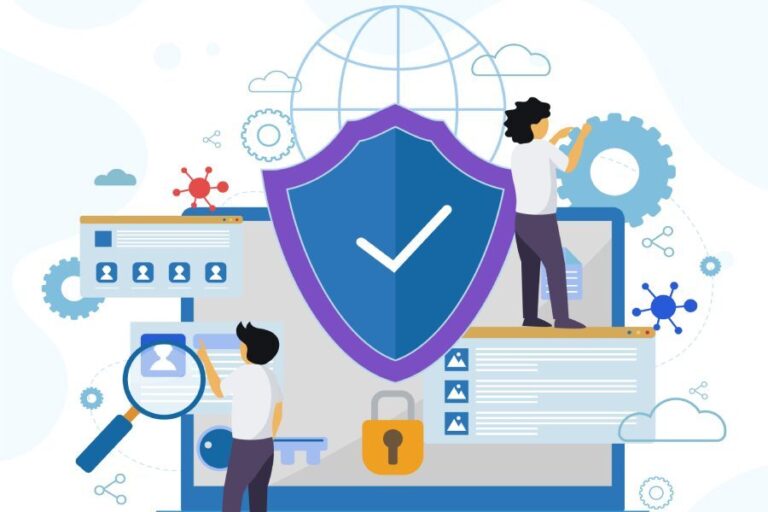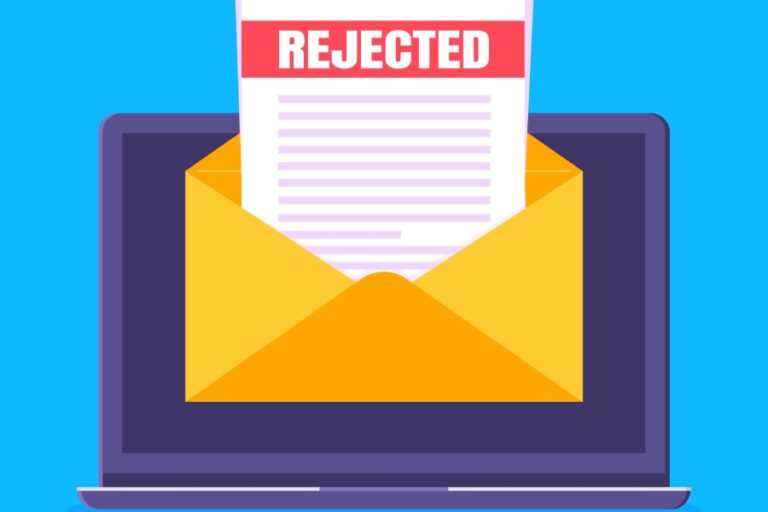If you regularly send out marketing emails for your business, you probably know what kind of emails we’re talking about— those automated messages sent from addresses like no-reply@yourcompany.com.
These kinds of emails are very popular among businesses and are often used to convey some kind of information, like order confirmations, shipping updates, newsletters, and system alerts. But the fact they’re one-way creates a lot of problems, especially on the security front.
When people come across a no-reply email, they usually assume that it is from the official brand and, hence, safe. But this might not always be the case. This is where cybercriminals play smart! They capitalize on this assumption and send out phishing emails by mimicking the no-reply email.
To make matters worse, the recipients cannot reply or ask questions, so suspicious activity may not get reported. And from a business point of view, sending messages from a no-reply address can also damage trust.
So, one thing is clear: These no-reply emails are certainly convenient, but the harm that they cause outweighs the convenience.
Let us dig deeper and understand how exactly these emails damage your business’ security posture, customer relationships, and overall communication strategy.
What exactly are no-reply emails?
A lot of businesses send no-reply emails, and chances are that you do, too.
These are the messages that come from addresses like no-reply@yourcompany.com, typically used for sending out things like receipts, password resets, appointment reminders, or promotional content. The main goal is to push information out without inviting replies — which sounds efficient, especially if your team wants to avoid an overflowing inbox.
This is one way to look at things. From a security and brand integrity standpoint, these emails create unintended problems. When a customer cannot actively engage with your emails, it sends the message that their voice doesn’t matter — and that can hurt the relationship. That’s not all! If someone spots something “phishy” with your emails, it inhibits them from even bringing it to your notice.
What are the risks of no-reply emails?
No doubt, no-reply emails are fuss-free; they do not clutter your inbox or demand any additional support resources, but they still can be a hassle to deal with. Wondering how? From enabling phishing attacks to hurting deliverability and leaking sensitive data, no-reply emails can quietly expose your organization to serious risks.
Let us take a look at them all:
They invite phishing attacks
When people come across these emails, they usually think that it must be legitimate; after all it is conveying useful information and looks like it’s coming from a trusted brand. This blind trust is what cybercriminals take advantage of. They curate a fraudulent email that is almost indistinguishable from the real one and trick users into clicking a malicious link, entering login credentials, or sharing private information without realizing what’s happening.
Your legitimate emails might end up in the spam folder
Most businesses overlook this aspect, but using no-reply emails can actually hurt your email deliverability. Email service providers like Google and Yahoo use spam filters, and while analyzing your emails, they take into account factors like open rates, reply rates, and overall engagement. Since these no-reply emails do not allow any engagement or replies, they are considered spam by the ESPs.
Your legitimate emails being marked as spam is itself a huge problem, but it does not end there. If your emails are consistently flagged by the spam filters, it impacts your sender reputation over time, and as a result, even your important emails, like password reset links or account alerts, might get filtered into spam or junk folders.
They can leak sensitive company information
You might wonder how emails that only allow one-way communication could possibly leak information, but it happens more often than you’d think. These short, automated emails usually have signatures that include information like names, job titles, phone numbers, or direct contact details. Attackers gather this information to carry out social engineering attacks or targeted phishing attacks. That’s why it’s important to be cautious about the kind of information included in automated emails — especially those that don’t allow recipients to ask questions or verify authenticity.

How do cybercriminals target no-reply systems?
There’s no denying that cybercriminals are getting smarter by the day, and they leave no opportunity to exploit any vulnerability they spot. This is particularly true when it comes to no-reply email systems because they know that these emails are often trusted with no questions asked. Attackers take advantage of this trust and launch various grave attacks.
Let us take a look at them:
Email spoofing and whitelisting risks
One of the most common tricks that attackers use is email spoofing. This is when an attacker fakes the “From” address to make it look like the email is coming from a trusted source, like no-reply@yourcompany.com. Because we’re used to seeing no-reply emails and usually don’t question them, it becomes easier for these fake emails to slip through. Things become worse when someone flags the forged email as “not spam” — it instructs the email platform to trust that email address in the future. It makes it easier for the attacker’s subsequent forged emails to land straight into your inbox, that too, without any warning.
Business Email Compromise (BEC) scams
The attackers don’t stop at spoofing. There’s something even more serious— Business Email Compromise, or BEC. In these scams, attackers pretend to be someone important in your company, like a manager, the finance head, or even a vendor you’ve worked with before. They send an email that looks real — sometimes from a no-reply address — asking for something urgent, like transferring money or sharing login details. And since the email appears familiar and there is no way to respond or verify that it’s legitimate, people will sometimes simply go ahead and do what it tells them.
How do you prevent falling prey to these attacks?
We understand that you cannot completely do away with no-reply emails for your organization; after all, it is important to simplify and streamline your email communication. But it is equally important to understand the risks associated with these attacks and take proactive steps to avoid them.
Here’s how you can protect your organization from no-reply email-based attacks:
Protect your email communication with authentication protocols
Here’s the truth: if you do not authenticate your emails, whether they’re sent from a no-reply address or not, anyone can pretend to be you. That’s where tools like SPF, DKIM, and DMARC come in. These tools are like security checkpoints for your emails, and they help email service providers verify that the messages coming from your domain are actually from you — not from a hacker trying to spoof your no-reply address.
Without these tools, it becomes very easy for threat actors to trick your employees or customers with phony emails that appear genuine. But once you implement these email authentication protocols, it becomes harder for attackers to get through your mailbox and increases the chances that your actual emails will end up in inboxes instead of spam filters.

Educate your team on how to spot scams
Even with the most advanced tools, humans are the first line of defense. That’s why training your employees to recognize red flags — such as emails that sound urgent, request money, or are from someone they didn’t expect — is extremely crucial. Most of these emails appear to be from within the company or from a no-reply address, so they usually fly under the radar.
Educate your team to take a moment to slow down, verify names and addresses, and query before they click anything. You don’t have to overwhelm them; just send them frequent reminders, rapid tips, and perhaps an engaging quiz occasionally. If your team knows what they should be aware of, they won’t get duped by scams.
Focus on the bigger picture
Cybersecurity isn’t a one-and-done task; it is an ongoing endeavor and demands shared responsibility across the entire organization. When it comes to protecting your organization against malicious attacks, a single tool doesn’t suffice. Threats evolve, attackers get smarter, and so your security practices need to keep up.
A single spoofed no-reply email might not seem like a big deal by itself, but it can lead to serious issues such as stolen information, financial loss, or harm to your business reputation. That is why it is important to look at the bigger picture— not only tools and systems but also how your team operates, how you react to threats, and how frequently you check your security configuration.
It’s important to stay vigilant and proactive so you can protect yourself in the long run and avoid bigger problems down the road. Need help configuring authentication protocols for your email-sending domain? SPF should be your first step! Our team at AutoSPF can help you set it up correctly and ensure it works smoothly with your existing email infrastructure. Get in touch with us today to know more!






